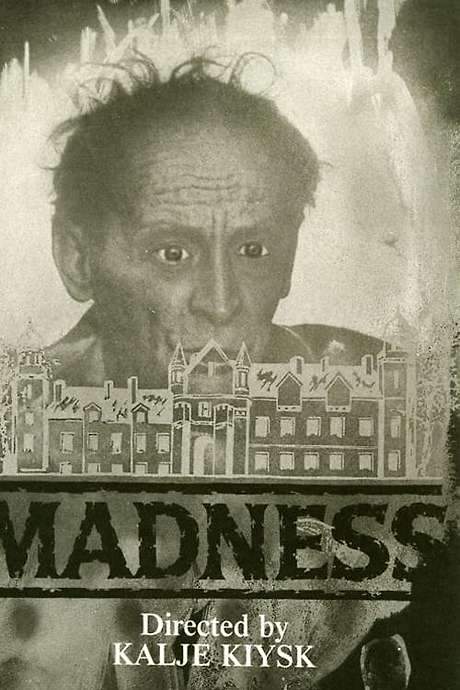The Madness of King George 1994

In 1788, King George III of England suffers a mysterious illness that increasingly impairs his mental state, leading to erratic behavior and bewildering episodes. His doctors struggle to understand the cause of his condition as the king’s episodes become more frequent and severe. Queen Charlotte and Prime Minister William Pitt the Younger must work together to manage the escalating crisis and protect the monarchy from those who seek to exploit the king’s vulnerability and destabilize the nation.
Does The Madness of King George have end credit scenes?
No!
The Madness of King George does not have end credit scenes. You can leave when the credits roll.
Meet the Full Cast and Actors of The Madness of King George
Explore the complete cast of The Madness of King George, including both lead and supporting actors. Learn who plays each character, discover their past roles and achievements, and find out what makes this ensemble cast stand out in the world of film and television.
External Links and Streaming Options
Discover where to watch The Madness of King George online, including streaming platforms, rental options, and official sources. Compare reviews, ratings, and in-depth movie information across sites like IMDb, TMDb, Wikipedia or Rotten Tomatoes.
Ratings and Reviews for The Madness of King George
See how The Madness of King George is rated across major platforms like IMDb, Metacritic, and TMDb. Compare audience scores and critic reviews to understand where The Madness of King George stands among top-rated movies in its genre.

89
Metascore
7.8
User Score


%
TOMATOMETER

0%
User Score

67
%
User Score
Take the Ultimate The Madness of King George Movie Quiz
Challenge your knowledge of The Madness of King George with this fun and interactive movie quiz. Test yourself on key plot points, iconic characters, hidden details, and memorable moments to see how well you really know the film.
The Madness of King George Quiz: Test your knowledge about the events and characters in 'The Madness of King George' from 1994.
What triggered the crisis in King George III's reign?
The loss of America
His marriage
Conspiracies against him
Health issues
His mental state began to unravel
Show hint
Awards & Nominations for The Madness of King George
Discover all the awards and nominations received by The Madness of King George, from Oscars to film festival honors. Learn how The Madness of King George and its cast and crew have been recognized by critics and the industry alike.
49th British Academy Film Awards 1996
Best Film




Best Adapted Screenplay
Best Cinematography
Best Original Music
Best Production Design
Best Sound
Outstanding British Film
67th Academy Awards 1995


Art Direction
Writing (Screenplay Based on Material Previously Produced or Published)
Full Plot Summary and Ending Explained for The Madness of King George
Read the complete plot summary of The Madness of King George, including all major events, twists, and the full ending explained in detail. Explore key characters, themes, hidden meanings, and everything you need to understand the story from beginning to end.
King George III’s struggle with madness in 1788 ignites the Regency Crisis, setting off a fierce battle for power within the British Parliament. On one side is Tory Prime Minister William Pitt the Younger, while on the other is the reform-minded Charles James Fox. Initially, the King’s peculiarities seem harmless—his dedication to the welfare of Great Britain is evident, as is his extensive knowledge about even the most obscure royal appointments. His love for his wife, Queen Charlotte, and their 15 children is unwavering. However, as the weight of America’s loss presses down on him, George III begins to exhibit troubling symptoms: forgetfulness, erratic behavior, and a condition that turns his urine blue.
Meanwhile, the ambitious George, Prince of Wales, senses the opportunity to step into greater power if his father becomes incapacitated. Resentful of his father’s continual reproach and eager for autonomy, he secretly marries Mrs. Fitzherbert in 1785, a union that is illegal without royal assent. As he aligns himself with Fox, whose progressive agenda includes the abolition of the slave trade, he seeks to provoke his father by arranging a concert featuring Handel’s music. This move leads to anticipated chaos when the King during the performance begins to act out, engaging in indecent chatter with Lady Pembroke and ultimately attacking his son.
In a poignant private discussion with Charlotte, King George confesses his awareness of his deteriorating state. However, they are soon pulled apart on the advice of his physician. Under the guidance of Dr. Warren, the King undergoes archaic treatments that focus obsessively on his bodily functions, involving painful methods such as cupping and laxatives.
Seeking a more compassionate approach, Lady Pembroke recommends Dr. Francis Willis, known for successfully treating her mother-in-law. Willis employs unconventional therapies at his rural estate in Lincolnshire, which emphasize the patient’s self-perception. As he tells an attendant, “To be curbed, thwarted, stood up to, exercises the character.” When the King lashes out in anger, Willis resorts to physical restraint, indicating that the King will be held fast whenever he engages in inappropriate speech or behavior.
A pivotal moment arrives when the Prince decides to have the King moved to Kew, prompting an emotional scene where Charlotte watches her beloved struggle against his restraints. “Until you can govern yourself, you’re not fit to govern others. And until you do so, I shall govern you,” Willis asserts. Despite initial resistance, the King slowly begins to improve, ultimately managing to feed himself during a moment of accomplishment, though his delusions persist.
As the Whig opposition skillfully challenges Pitt’s increasingly unpopular government, they propose that the Prince be granted regency powers. Baron Thurlow, the Lord Chancellor, attempts to suppress knowledge of the secret marriage, but as Fox succeeds, the Regency Bill emerges. A touching scene unfolds as Thurlow reads from King Lear to the King, prompting George III to reflect, “I have remembered how to seem…”—a phrase he hasn’t used in months, signaling a hopeful return to clarity, as indicated by the restoration of his urine color to yellow.
Arriving at Parliament just in time, the King confronts his son, forcing him to confess his marriage and to set aside Fitzherbert. With the crisis seemingly averted, those who have watched the King’s turmoil are dismissed, as remarked by Fitzroy, “To be kind does not commend you to kings.”
The royal family receives a jubilant welcome at St. Paul’s Cathedral. Although Willis observes their return, the King chooses to expel him from his life. “We must be a model family,” he affirms, expressing a desire for connection with the public: “Smile at the people, wave at them. Let them see that we’re happy. That’s why we’re here.” Amidst the cheering crowd, Willis and Mrs. Fitzherbert exchange bittersweet glances as the King embraces his newfound stability.
Uncover the Details: Timeline, Characters, Themes, and Beyond!

Coming soon on iOS and Android
The Plot Explained Mobile App
From blockbusters to hidden gems — dive into movie stories anytime, anywhere. Save your favorites, discover plots faster, and never miss a twist again.
Sign up to be the first to know when we launch. Your email stays private — always.
Watch Trailers, Clips & Behind-the-Scenes for The Madness of King George
Watch official trailers, exclusive clips, cast interviews, and behind-the-scenes footage from The Madness of King George. Dive deeper into the making of the film, its standout moments, and key production insights.
The Madness of King George Themes and Keywords
Discover the central themes, ideas, and keywords that define the movie’s story, tone, and message. Analyze the film’s deeper meanings, genre influences, and recurring concepts.
The Madness of King George Other Names and Titles
Explore the various alternative titles, translations, and other names used for The Madness of King George across different regions and languages. Understand how the film is marketed and recognized worldwide.
Similar Movies To The Madness of King George You Should Know About
Browse a curated list of movies similar in genre, tone, characters, or story structure. Discover new titles like the one you're watching, perfect for fans of related plots, vibes, or cinematic styles.
Quick Links: Summary, Cast, Ratings, More

What's After the Movie?
Not sure whether to stay after the credits? Find out!
Explore Our Movie Platform
New Movie Releases (2026)
Famous Movie Actors
Top Film Production Studios
Movie Plot Summaries & Endings
Major Movie Awards & Winners
Best Concert Films & Music Documentaries
Movie Collections and Curated Lists
© 2026 What's After the Movie. All rights reserved.

































